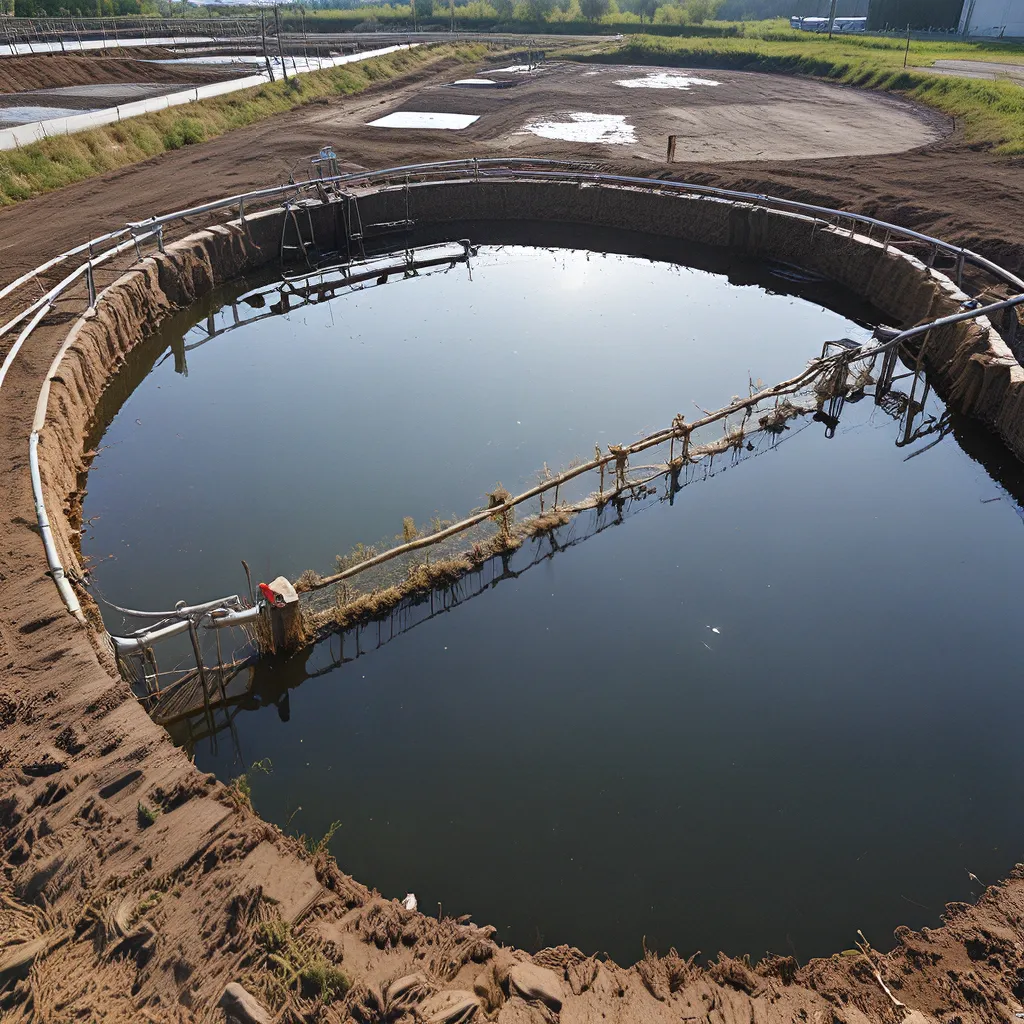
Imagine a world where our waste doesn’t go to waste. Where the very byproducts we often discard as useless actually hold untapped potential. That’s the promise of the circular bioeconomy, and at the heart of this transformative approach lies the powerful role of wastewater treatment.
As someone who’s always been fascinated by the hidden wonders of the natural world, I’ve come to realize that wastewater is far more than just a stream of dirty water. It’s a veritable treasure trove, brimming with valuable resources that we’ve often neglected. And it’s time to change that.
Embracing the Circular Bioeconomy
The circular bioeconomy is a revolutionary concept that challenges the traditional linear “take-make-waste” model of our economy. Instead, it envisions a future where we treat waste as a valuable feedstock, recycling and repurposing it to generate new products and energy. It’s a shift in mindset that recognizes the inherent worth in the things we too often discard.
At the heart of this circular approach is the wastewater treatment industry. By leveraging advanced technologies and innovative processes, we can unlock the hidden riches within our wastewater streams. From extracting biofuels and bioplastics to recovering essential nutrients and minerals, the potential is truly staggering.
The U.S. government has recognized the critical role of wastewater treatment in the circular bioeconomy, highlighting its ability to “recover energy, nutrients, and other valuable resources from wastewater and sludge.” This shift towards a more sustainable and circular approach is not just an environmental imperative, but also an economic one.
Unlocking the Value of Waste
When I first learned about the concept of the circular bioeconomy, I’ll admit, I was a bit skeptical. How could something as seemingly mundane as wastewater hold so much promise? But the more I dove into the research, the more I was amazed by the sheer breadth of possibilities.
Biofuels, for instance, can be produced from the organic matter in wastewater, reducing our reliance on fossil fuels and contributing to a more sustainable energy future. Studies have shown that wastewater-derived biofuels can be a cost-effective and environmentally-friendly alternative to traditional transportation fuels.
But the benefits don’t stop there. Wastewater treatment plants can also recover essential nutrients like nitrogen and phosphorus, which are crucial for agricultural production. By extracting these nutrients and repurposing them as fertilizers, we can close the loop on our resource use, reducing waste and supporting sustainable food systems.
And let’s not forget about the potential for bioplastics. The organic matter in wastewater can be converted into biodegradable plastics, offering a sustainable alternative to the petroleum-based plastics that have become a scourge on our environment. Experts suggest that the circular bioeconomy could unlock a greener GDP by facilitating the transition to more sustainable materials and products.
The Power of Wastewater Innovation
As I delved deeper into the world of wastewater treatment, I was struck by the sheer ingenuity and creativity of the industry. It’s not just about efficiently processing dirty water; it’s about reimagining the entire system and unlocking its hidden potential.
One particularly fascinating example is the use of anaerobic digestion in wastewater treatment plants. This process harnesses the power of microorganisms to break down organic matter, generating biogas that can then be used to produce renewable energy. It’s a beautiful example of the circular bioeconomy in action, where waste becomes a valuable resource.
But the innovation doesn’t stop there. Membrane bioreactors, constructed wetlands, and advanced oxidation processes are just a few of the cutting-edge technologies being employed to push the boundaries of wastewater treatment. These innovative approaches not only improve the efficiency and effectiveness of wastewater processing, but they also unlock new avenues for resource recovery and reuse.
Embracing the Future of Wastewater
As I reflect on the incredible potential of wastewater treatment and the circular bioeconomy, I can’t help but feel a sense of excitement and optimism. This is a field that’s ripe for transformation, and the opportunities are truly limitless.
At Alpha Wastewater, we’re at the forefront of this revolution, embracing the latest technologies and techniques to revolutionize the way we manage our wastewater resources. From biofuel production to nutrient recovery, we’re committed to unlocking the value of waste and building a more sustainable future.
But the journey is far from over. There’s still so much to discover, explore, and innovate. As we continue to push the boundaries of what’s possible, I can’t help but wonder what other hidden treasures might be waiting to be unearthed in the depths of our wastewater streams.
One thing is certain: the circular bioeconomy is no longer a distant dream; it’s a reality that’s unfolding right before our eyes. And at the heart of this transformation lies the power of wastewater treatment – a testament to the incredible ingenuity and resourcefulness of the human spirit.
So, let’s embrace this exciting future, dive in to the world of wastewater, and unlock the boundless potential that lies within. The possibilities are endless, and the rewards? Well, they’re beyond anything we could have imagined.